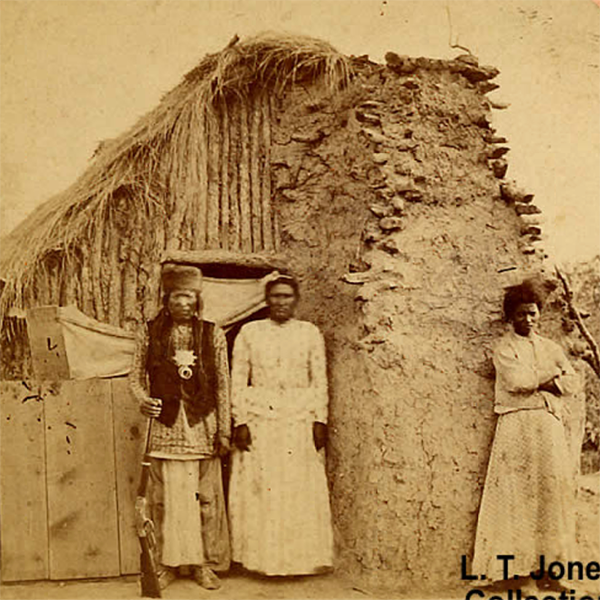Two Ways of Life

Download lesson plan and included materials
Subject: Social Studies
Grade: 4th Grade
Author: Dr. Mary S. Black, revised by Jason Terry (2023)
Time Duration: One or two 50-minute class periods
Objective: Students will compare the ways of life of Indians on the western Texas frontier and U.S. military men at the Texas forts. These two ways of life came into conflict in Texas, ending with the removal and virtual destruction of most Native Americans from the state. This conflict is a classic example of a culture with more advanced technology overcoming a less technologically advanced group, a pattern of human affairs often repeated throughout history.
TEKS: Social Studies, Grade 4
- (1C), describe the cultural regions in which American Indians lived such as Gulf, Plains, Puebloan, and Southeastern
- (4D), explain the effects on American Indian life brought about by the Red River War, building of U.S. forts and railroads, and loss of buffalo
- (6A), identify, locate, and describe the physical regions of Texas (Mountains and Basins, Great Plains, North Central Plains, Coastal Plains), including their characteristics such as landforms, climate, vegetation, and economic activities
- (6B), compare the physical regions of Texas (Mountains and Basins, Great Plains, North Central Plains, Coastal Plains)
- (8A), describe ways people have adapted to and modified their environment in Texas, past and present
- (19B), analyze information by applying absolute and relative chronology through sequencing, categorizing, identifying cause-and-effect relationships, comparing, contrasting, finding the main idea, summarizing, making generalizations and predictions, and drawing inferences and conclusions
- (19C), organize and interpret information in outlines, reports, databases, and visuals
- (19D), identify different points of view about an issue, topic, historical event, or current event
Materials:
- www.texasbeyondhistory.net/forts/military.html
- www.texasbeyondhistory.net/forts/indians.html
- Student note-taking handouts (included)
- Illustrations/pictures of Plains Tribes and U.S. Army soldiers on the Texas Frontier (included)
- Pens, pencils, colored pencils, or markers
- Magazines (optional)
Activities and Procedures:
Step 1: Teacher goes through the illustrations of Plains Indians with students one at a time or allows students to do so at their own pace, individually or in groups.
Step 2: Students examine illustrations for details about Indian clothing, transportation, weapons, or shelter. Students may also make inferences about these topics. Students write/illustrate their observations in the boxes on their graphic organizer.
Step 3: Students write a one-sentence caption, summary, or inference for each block on the student handout on the lines provided.
Step 4: Students repeat the process for the Frontier Soldiers.
Step 5: Students choose one of the following:
- Complete the Venn Diagram comparing Plains Tribes and U.S. Army soldiers on the frontier. The amount of information in the diagram is up to the teacher.
- Use the stick figure diagram to compare/contrast Plains Tribes and U.S. Army soldiers on the frontier. One side of the stick figure represents a Plains Native, while the other side represents a U.S. soldier. Students may use a combination of illustrations, words, and pictures from magazines or other sources. Add pictures and text to the stick figure to show the differences between the two groups.
- Instead of using the stick figure to represent differences between the two groups, have students (using words, illustrations, cutouts from magazines, etc.) combine characteristics of each group to create their idea of the ultimate Great Plains warrior.
Closure: Discuss the following question: Why do you think the U.S. soldiers were able to defeat the Indians and their way of life? Please give specific examples based on your evidence.
Student Product: Completed handout and Venn Diagram